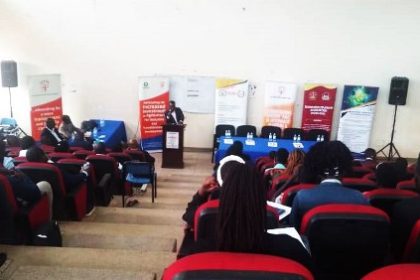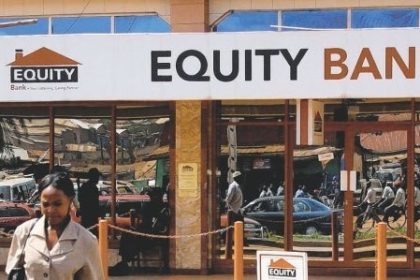East Africa retains top spot as fastest growing region
January 18—In spite of drought, endless squabbles over non-tariff barriers (NTBs) in the East African Common Market and instability in South Sudan and Somalia, East Africa remains the fastest-growing sub-region in Africa during 2017 and the continued economic surge in Ethiopia has helped maintain top spot.
The latest African Economic Outlook report published by the African Development Bank (AfDB) estimates 5.6 percent growth in 2017, up from 4.9 percent in 2016. This growth is expected to remain buoyant, reaching 5.9 percent in 2018 and 6.1 percent in 2019.
However the persistence of NTBs in the EAC, despite introduction of monitoring methods such as using mobile SMS alerts, still affects trade flows, and reduces the benefits to be gained from the regional integration process.
AfDB groups 12 countries under East Africa; Burundi, Comoros, Djibouti, Eritrea, Ethiopia, Kenya, Rwanda, Seychelles, South Sudan, Sudan, Tanzania and Uganda. For the past two years, East Africa has been outperforming all other regions and according to the AfDB will continue to do so in the near term.
Strong growth is widespread in the sub-region, with many countries (Djibouti, Ethiopia, Kenya, Rwanda, Tanzania and Uganda) growing 5 percent or more. Private consumption is the most important driver of growth in Comoros and Kenya. Public investment in infrastructure has been instrumental in Djibouti and Ethiopia.
AfDB predicts agriculture will rebound after poor harvests in 2017, particularly in parts of East Africa. Construction activity will also remain strong. In a few countries, continued expansion of services, including information and communications technology, will be key. Manufacturing activity may increase the share of industry, particularly in Kenya and Tanzania.
North Africa recorded the second-highest growth rate in Africa, at 5.0 percent in 2017, up from 3.3 percent in 2016. The sub-region’s growth is projected to accelerate to 5.1 percent in 2018, slowing to 4.5 percent in 2019. Recovery of Libya’s oil production underpinned this growth. Its GDP increased 55.1 percent in 2017, after declines in previous years— but output still remained about a third lower than before the 2011 Arab revolution.
Egypt continued to record stable growth, of 4.1 percent in 2017, down slightly from 4.3 percent in 2016. Growth benefited from the return of foreign direct investment (FDI) and net exports, which were boosted by the depreciation of the real exchange rate after its liberalisation.
Wider fiscal and monetary space allowed Algeria to mitigate the adverse effects of lower oil prices on the economy, averting a sharper decline in growth after the fall in oil prices. The government responded to lower government revenue in 2017 by significantly reducing public expenditure (to 36 percent of GDP, down from 42 percent of GDP in 2016).
Growth in Southern Africa nearly doubled in 2017, to 1.6 percent, up from 0.9 percent in 2016. The improvement reflects better performance of the three main commodity exporters: South Africa, which doubled its growth (still low, at 0.6 percent); Angola, where output expanded by 2.1 percent; and Zambia, which grew 4.1 percent. The three countries accounted for about 1 percentage point of Africa’s rate.
Growth is forecast to increase to 2.0 percent in 2018 and 2.4 percent in 2019, underpinned by expansion in agriculture, mining, and services. These figures are lower than the African average, mainly because of slow growth in South Africa, which has strong neighborhood spillover effects (through trade and revenues sharing) on the sub-region’s customs union. Policy uncertainty in South Africa could delay much needed fiscal adjustments, especially of support to state enterprises.
Lesotho, Malawi, Mauritius, and Mozambique are expected to grow about 4 percent or more, but their contribution to the sub-region’s GDP is small.
In West Africa, supported by increased oil production and output growth in agriculture, Nigeria is expected to consolidate the gains made in 2017. As a result, growth is projected to accelerate to 3.6 percent in 2018 and 3.8 percent in 2019. Other large countries accounting for the expansion include Cote d’Ivoire, Ghana, and Senegal; smaller countries (Benin, Burkina Faso, Sierra Leone, and Togo) are also expected to grow at 5 percent or more.
The Central Africa region has continued to under-perform, even with the recovery in oil prices. Output contracted sharply in the Republic of Congo (-4.0 percent) and Equatorial Guinea (-7.3 percent), weighing down the region’s overall growth to 0.9 percent in 2017. Moderate recovery in the Republic of Congo will bolster growth in the region, which is expected to pick up to 2.6 percent in 2018 and 3.4 percent in 2019, respectively.
Macroeconomic conditions have deteriorated sharply, stoked largely by the fall in oil revenues. The sub-region’s deep-seated dependence on oil, together with the fixed exchange rate and lack of independent monetary policy levers to adjust to changing economic conditions (because of all five countries’membership in the Central African Economic and Monetary Community (CEMAC), have slowed growth.
According to one recent study done for the London-based Overseas Development Institute, Tanzania remains the culprit when it comes to NTBs. Since 2009, Tanzania has been the country imposing the largest number of tax-like and quality/safety measures, by quite a large margin. Tanzania is also the country that takes the longest to resolve reported NTBs.
Linda Calabrese and Andreas Eberhard-Ruiz said, “This would suggest a lower level of commitment to the EAC integration process in Tanzania than in other countries – a perception supported by the findings of other studies and the media. Responsibility for trade and customs facilitation is shared more equally between Kenya and Tanzania, yet this is hardly surprising given that they are the only countries in the EAC with direct access to the sea and that they are home to the largest stretches of the main transport corridors in the region.”
Africa as a whole saw growth fall behind the global average in 2016; in 2017 it grew at about the same rate as the global economy. But because population growth is greater than in most other regions, per capita growth was below the world average.

 Shell Club rewards first winners with brand new motorbikes in Mbale
Shell Club rewards first winners with brand new motorbikes in Mbale
 CSBAG roots for increased funding for renewable energy
CSBAG roots for increased funding for renewable energy
 Equity walks tried and tested path to deliver solid half-year
Equity walks tried and tested path to deliver solid half-year
 Nile Breweries primes retailers for brave new world
Nile Breweries primes retailers for brave new world
 Uganda calls for collaboration with airlines in fight against illicit trade in wildlife
Uganda calls for collaboration with airlines in fight against illicit trade in wildlife
 Airline industry top guns dust-off passports for Uganda hosted 55th AFRAA annual meet
Airline industry top guns dust-off passports for Uganda hosted 55th AFRAA annual meet
